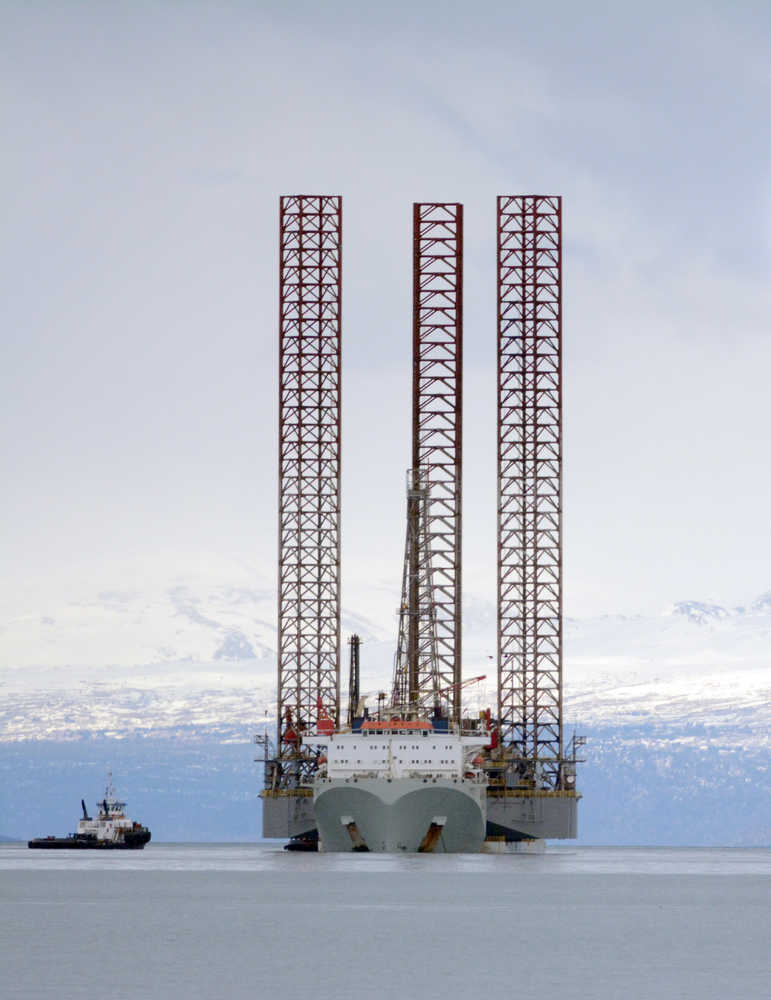Though oil and gas construction spending around the state is predicted to drop, Cook Inlet is somewhat shielded by smaller producers’ investments.
Most of the Cook Inlet producers are smaller companies than those that operate on the North Slope and are planning to be here for the long term. Although the price of oil is predicted to remain low and the future of the oil and gas tax credit program is still uncertain, the three major companies in with interests Cook Inlet — Hilcorp Alaska, BlueCrest Energy and Furie Operating Alaska — are expected to continue their plans for this year.
BlueCrest Energy, a newcomer from Texas, is expecting first oil from its Cosmopolitan field off Anchor Point in April. BlueCrest President Benjamin Johnson said in January that the company has so far spent about $300 million and staffs its facility entirely with Alaskan workers. The company will drill two additional wells this year.
Hilcorp Alaska, the Alaska arm of the Texas-based operation, has been aggressively buying up oil and gas assets for the past several years. The company currently plans to invest about $220 million in 2016 on maintenance, operations and other projects, one of which is an exploration project on the lower Kenai Peninsula.
The spring has brought Furie Operating Alaska its first natural gas contracts, solidifying its presence in Cook Inlet, said Bruce Webb, Furie’s Vice President. The company’s contract with Homer Electric Association will begin April 1, he said. So far, the company has been operating largely on equity and borrowed money, so it’s exciting for the company to have its first formal gas contract, he said.
“We’ve invested $700 million in the Inlet right now,” Webb said. “Pretty much, that’s our commitment to be here long term.”
The company is also bringing in a new jack-up rig to drill new wells — the Randolph Yost, a larger rig than the Buccaneer rig that drilled Furie’s original wells in its Kitchen Lights Unit. The company has applied to drill 9 new wells over the next five years, though the number that will actually be realized will depend on the state’s decision regarding the oil and gas tax credit program, Webb said.
“(The Kitchen Lights Unit) is about 20 miles long,” Webb said. “If everything went right, it’d probably look like the Trading Bay area.”
The Alaska LNG Project is also moving forward with exploration work, despite the uncertainty of the project’s future in Juneau. A budget of $230 million has already been approved for fieldwork in the Cook Inlet basin for 2016, which will not be affected by the state’s future budget decisions.
That spending will include seismic work, geophysical work and drafting environmental and socioeconomic resource reports, as well as evaluations of other factors, according to a news release from the Alaska LNG Project.
The tone of the conversation has changed drastically since last year, said Kate Blair, the committee and projects coordinator for the Alaska Oil and Gas Association, who spoke at Kenai’s Industry Outlook Forum in January.
“What we can say from the industry as a whole standpoint is that there is just a lot of uncertainty right now, especially with the looks at significantly changing the tax policy,” Blair said. “With that uncertainty comes a lot of uncertainty.”
While the conversations a year ago were about potential new investment and development in the North Slope and offshore, the conversations now are about efficiencies and what a changing tax structure could mean for companies, Blair said. None of the companies have officially stated how a change to Alaska’ oil and gas tax credit program, which is currently being examined in the Legislature, would affect their businesses yet, she said.
The Alaska Oil and Gas Association’s official position is that the Alaska Legislature should leave the oil and gas tax credit program as it is because the economy is tough enough for the oil and gas producers without adding further pressure to them.
Johnson has said BlueCrest will have to hold off on developing the gas pool at the Cosmopolitan site if the tax credits are significantly changed. He called on the Legislature in January to leave the program as it is at least for a year to allow companies to continue with their investments and fulfill contracts that, in BlueCrest’s case, are already signed.
“This is the time that … it’s important that legislature and the governor understand that the gas development in the Cook Inlet is very important,” Johnson said at the Industry Outlook Forum. “Properly designed tax credits are … a very good investment for Alaskans. It’s an investment, not a cost.”
Reach Elizabeth Earl at elizabeth.earl@peninsulaclarion.com.
